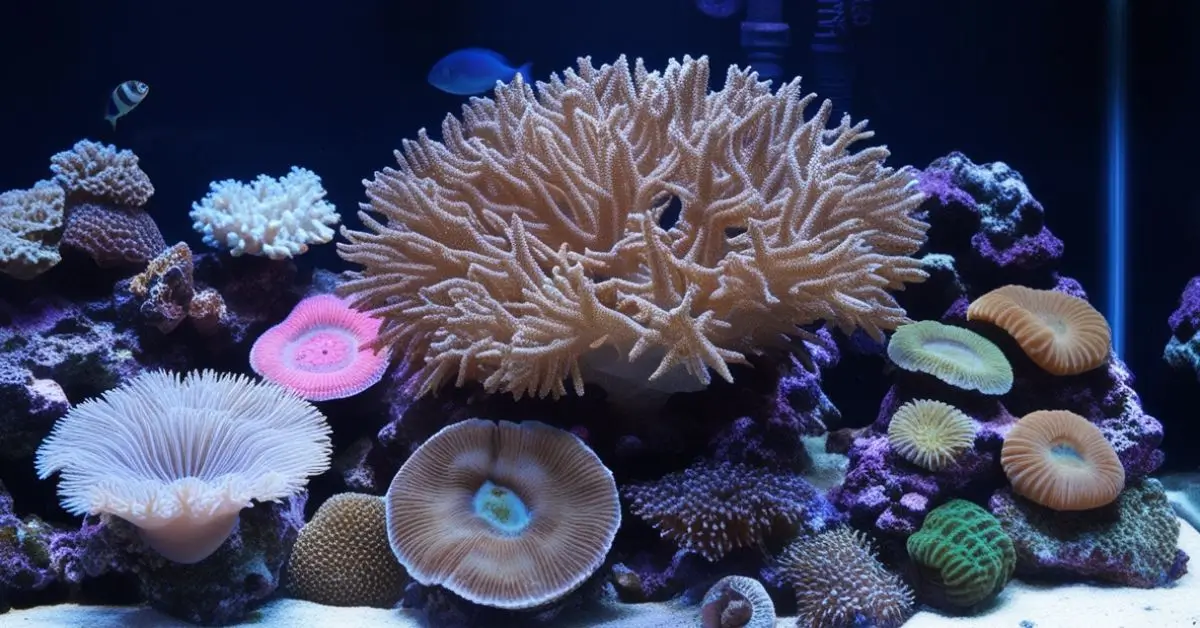Coral reefs are vital to marine ecosystems, providing habitat, food, and protection for countless marine species. In home aquariums, corals add beauty and complexity, but their health can be delicate. Recognizing when a coral is dying or has died is crucial for maintaining a thriving reef tank.
Understanding Coral Health
Corals are living organisms composed of tiny polyps that build calcium carbonate skeletons. They rely on a symbiotic relationship with zooxanthellae algae, which provide energy through photosynthesis. When corals experience stress, this relationship can break down, leading to health decline.
Key Indicators of Coral Health
Monitoring your corals regularly helps in early detection of potential issues. Here are some signs to assess coral health:
-
Coloration:
- Healthy Coral: Vibrant colors due to the presence of zooxanthellae.
- Stressed Coral: Faded or pale colors, indicating potential bleaching.
- Dead Coral: Completely white skeletons devoid of living tissue.
-
Polyp Extension:
- Healthy Coral: Polyps extend fully, especially during feeding times.
- Stressed Coral: Partial or no polyp extension.
- Dead Coral: Absent polyps, leaving behind bare skeleton.
-
Tissue Recession:
- Healthy Coral: Tissue fully covers the skeleton.
- Stressed Coral: Tissue starts to recede, exposing parts of the skeleton.
- Dead Coral: Complete tissue loss, exposing the entire skeleton.
-
Algae Overgrowth:
- Healthy Coral: Minimal to no algae on the coral surface.
- Stressed Coral: Algae beginning to grow on exposed skeleton areas.
- Dead Coral: Significant algae covering the skeleton.
-
Odor:
- Healthy Coral: No noticeable smell.
- Dead Coral: Foul odor due to decaying tissue.
Comparison Chart: Signs of Coral Health Status
| Indicator | Healthy Coral | Stressed Coral | Dead Coral |
|---|---|---|---|
| Coloration | Vibrant | Faded/Pale | White |
| Polyp Extension | Full | Partial/None | Absent |
| Tissue Coverage | Complete | Receding | Absent |
| Algae Presence | None | Beginning | Significant |
| Odor | None | None | Foul |
Common Causes of Coral Death
Understanding the factors that can lead to coral death is essential for prevention:
- Water Quality Issues: Elevated nitrate or phosphate levels can stress corals.
- Inadequate Lighting: Insufficient or excessive light affects photosynthesis.
- Improper Water Flow: Both stagnant and overly strong currents can harm corals.
- Temperature Fluctuations: Sudden changes can lead to thermal stress.
- Pests and Diseases: Predatory organisms or infections can cause tissue loss.
Steps to Confirm Coral Death
If you suspect a coral is dead, follow these steps to confirm:
- Visual Inspection: Look for the absence of tissue and presence of algae overgrowth.
- Physical Examination: Gently touch the coral; a dead coral will feel hard and devoid of any soft tissue.
- Smell Test: Remove the coral from the water and smell it; a foul odor indicates decay.
Preventive Measures to Maintain Coral Health
To keep your corals healthy:
- Maintain Stable Water Parameters: Regularly test and adjust salinity, pH, and nutrient levels.
- Provide Appropriate Lighting: Ensure your lighting setup meets the specific needs of your coral species.
- Ensure Proper Water Flow: Adjust powerheads to create suitable flow patterns.
- Regular Monitoring: Observe your corals daily for any signs of stress or disease.
- Quarantine New Additions: Isolate new corals before introducing them to the main tank to prevent disease spread.
Conclusion
Recognizing the signs of coral death is vital for any reef aquarist. By understanding and monitoring indicators such as coloration, polyp extension, and tissue recession, you can take proactive steps to maintain the health of your corals and ensure a thriving aquarium ecosystem.
For a visual guide on determining coral health, you may find this video helpful:












